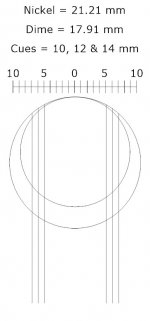Redwing4114
Registered
I've switched from a nickel to a dime and on long shots I have a harder time shooting. The tip is more rounded than a regular dime tip.
Also I think that its adding more throw.
I may go back to a nickel but I like the amount of back spin I can get with less power. Maybe something between a nickel and a dime.
Is the dime tip known to do this or is it flaws in my stroke?
Also I think that its adding more throw.
I may go back to a nickel but I like the amount of back spin I can get with less power. Maybe something between a nickel and a dime.
Is the dime tip known to do this or is it flaws in my stroke?
